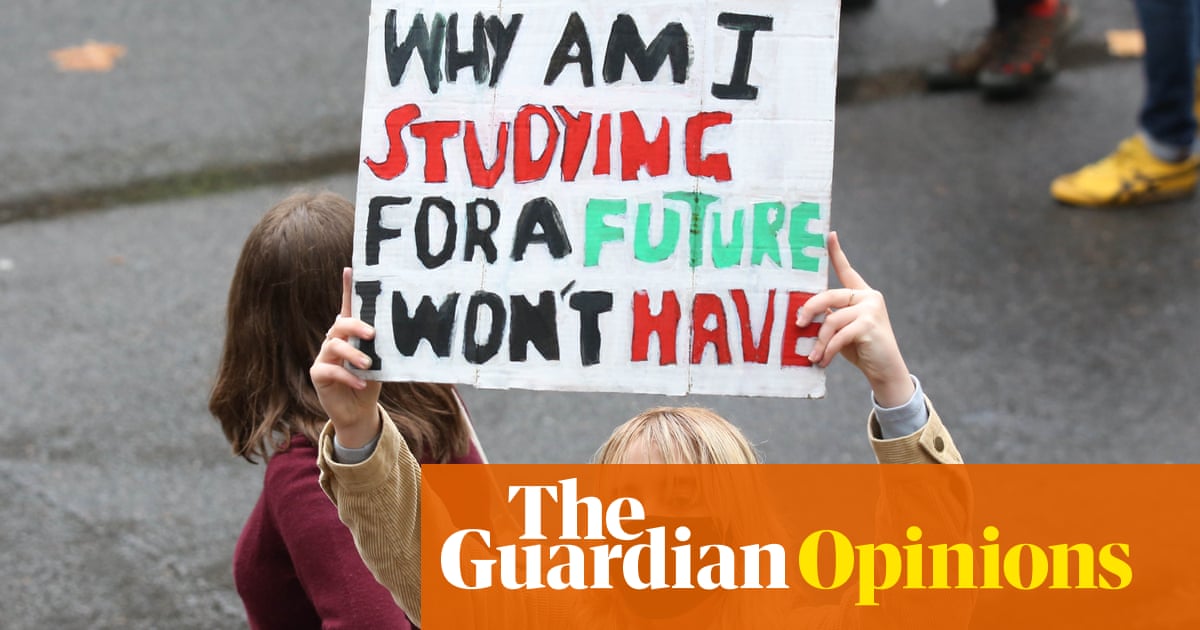Blaming John Howard is easy, but his government helped shape the world we live in – now and for future generations | Grogonomics

When asking “Who screwed the millennials?” should we just apply Ockham’s razor and answer “John Howard”? His government certainly shoulders a lot of blame but so do those who have done nothing to help since he was voted out.
The earliest millennials will be 70 in 2050, meaning almost all will be working when the world is forecast to reach temperatures more than 2C above pre-industry averages unless we do something.
They are the first generation who can’t really say “doesn’t matter, I’ll be dead by then”, but they of course are not the only group screwed by climate change.
When I turned 20 in 1992, I had experienced one month of global temperatures 1C above the average of the late 19th century. That was one month more than my father had experienced when he turned 20 in 1966. For their first 20 years, millennials born in January 1985 had just four months of temperatures 1C higher than the late 19th-century average.
When my daughter turned 20 last year, she had experienced 106 months of them.
If the graph does not display click here
John Howard is not to blame for climate change, but inaction on climate change in this country started under his watch.
He was the one who made sure Australia was able to count land clearing when calculating our emissions, and thus be able to claim reductions when we haven’t made any at all.
If the graph does not display click here
His government killed any chance of bipartisan policy for a price on carbon. But Howard’s actions are no excuse for anyone in government since, because we kept using his government’s definition of emissions and repeated its claims that we need more gas to lower emissions.
More millennials are paying for private health insurance than any during the Medicare period. Why fund public health when you can force people to prop up the private health sector with the “lifetime health cover” policy!
If the graph does not display click here
Howard’s desire to kill unions for the purpose of keeping wages down and profits high turbocharged (and distorted) the “neoliberal project” that began in the 1980s under Hawke and Keating.
If the graph does not display click here
Millennials have barely any experience of conducting industrial action for better pay and conditions, and coincidentally, those who started working after 2010 entered at a time real wage growth was heading south.
If the graph does not display click here
Is there any good news?
Fortunately, overall unemployment is now lower than anyone of working age has experienced.
Millennial women for example are much more likely to work than their older sisters and mothers. Just over 80% of women born in 1980 were employed in their early 40s compared with 67% of those women born in 1950.
If the graph does not display click here
Men in their 30s and 40s are less likely to be working full-time but the drop from about 90% to 82% is much less than the increase for women of the same age from 28% to 50%.
That’s good because millennials chose a pretty bad time to come into the labour force and be unemployed. Whereas boomers had unemployment benefits roughly 25% below poverty, by 2007 they were 47% below and by the middle of 2020 they hit 50% below.
If the graph does not display click here
But all this work means they all own homes, right?
Ahhh. Now we get to it.
Millennials, despite being more likely to have work than earlier generations, are much less likely to own a home.
If the graph does not display click here
When Howard said in 2003, “I don’t get people stopping me in the street and saying, ‘John, you’re outrageous, under your government the value of my house has increased’”, 57% of gen Xers in their late 30s and 65% of those in their early 40s already owned a home.
Little wonder his government was happy to not only provide a 50% discount to capital gains tax that turned the housing market into a casino, but also introduced the first homeowner’s grant and then later doubled it to keep juicing house prices.
If the graph does not display click here
Factors outside Australia also played a part in the soaring prices. But neither Howard nor anyone who followed has done anything to stop it.
Australian governments have decided that building homes is no longer worth doing despite every single person in the country (including all the MPs who have investment properties) knowing housing is a good bet.
There was a time when 20% of all new residences were being built by the public or social sector. Now it’s less than 2%.
If the graph does not display click here
Now sure, in 1990 interest rates got up to 17%. But those rates came down quickly and the loan sizes were much smaller compared with now.
Anyone who took out their first home loan after 2005 is paying much higher mortgage repayments than those who took out loans in the 1980s.
If the graph does not display click here
Have millennials been screwed?
Sure, they are more likely to be in work, but they work in a time of low wages growth. They are better educated, but pay much higher rates of Hecs/Help, and they are required to pay more for health cover. They know climate change is not some far-off event and yet governments filled with older MPs either do nothing or merely pretend to do something. And they know that owning a home is less likely than for any generation since the second world war and their repayments will be larger should they be lucky enough to buy a home.
Blaming John Howard is easy, but he was just the main avatar of a political and economic project designed to boost the wealth and incomes of those whose votes mattered more from 1980 through to 2010.
Unfortunately, the impact of those policies – especially on climate change – has screwed not only the millennials, but the generations to come.
Source: theguardian.com



